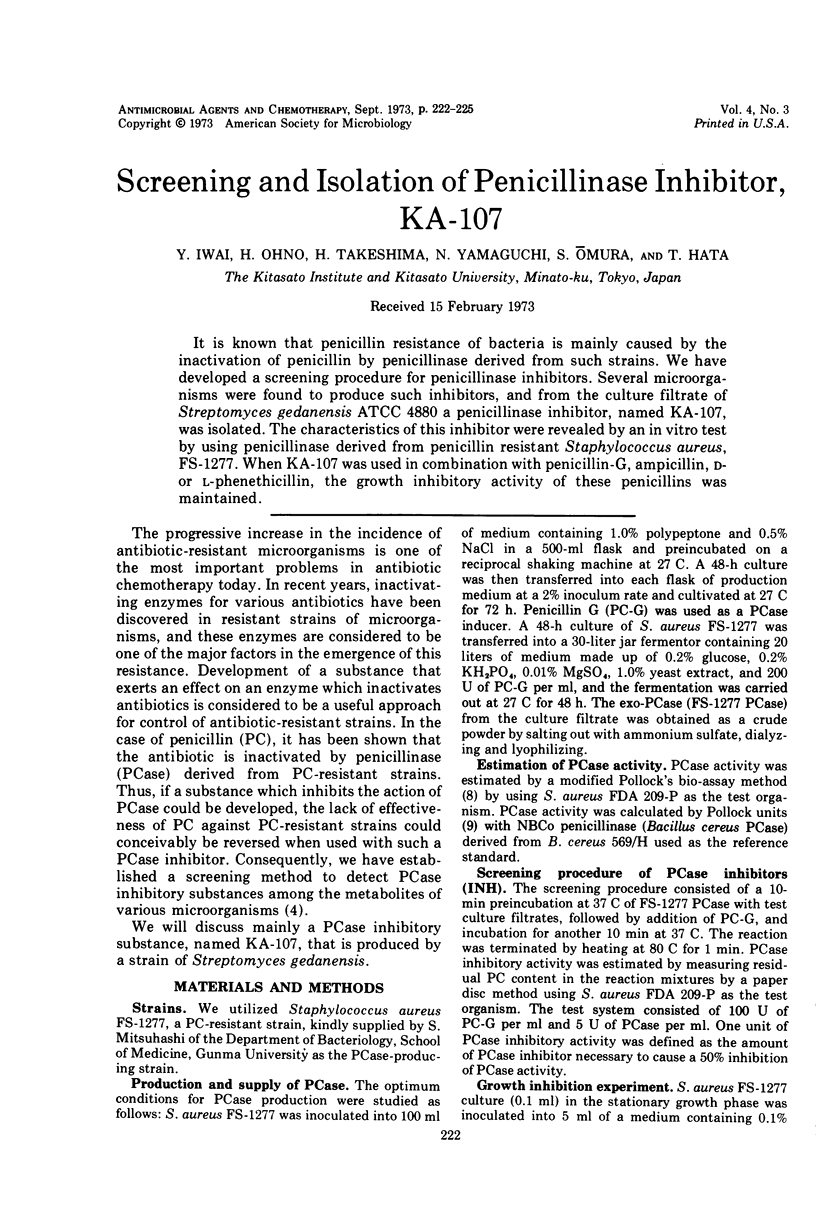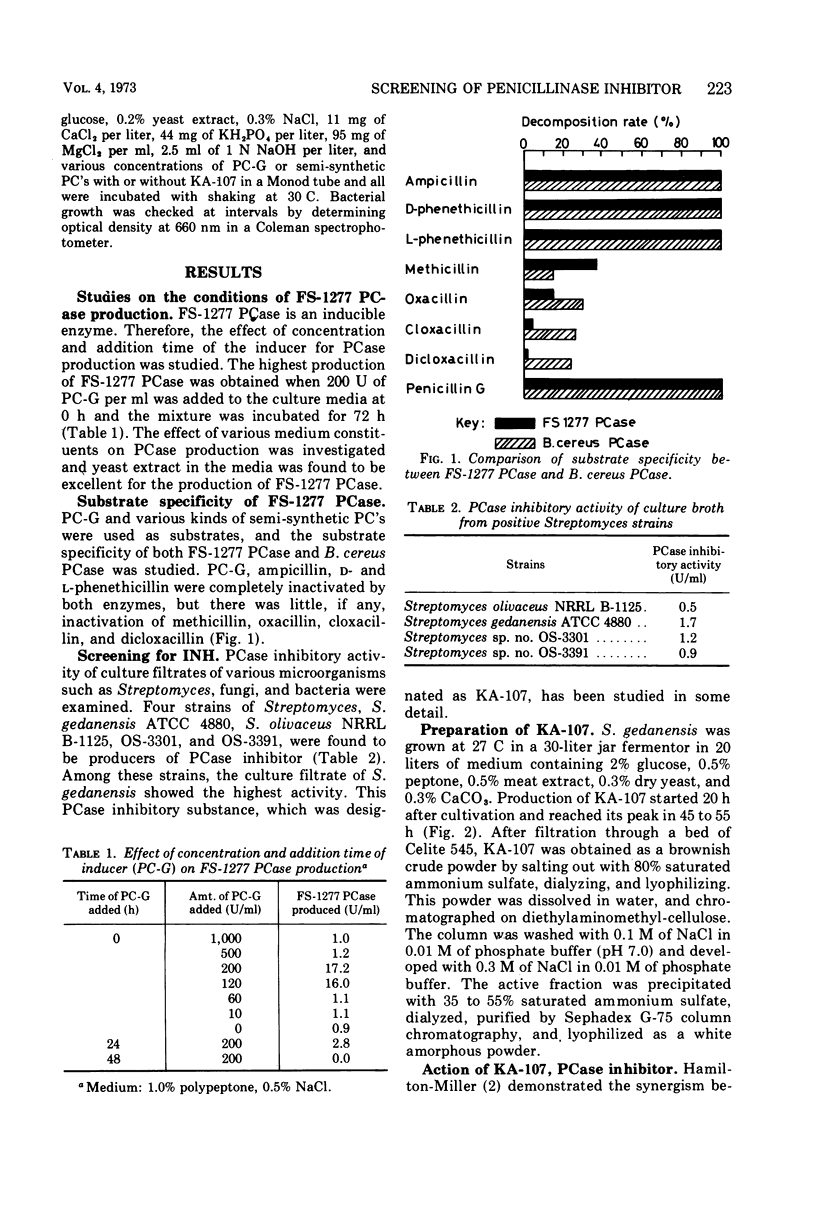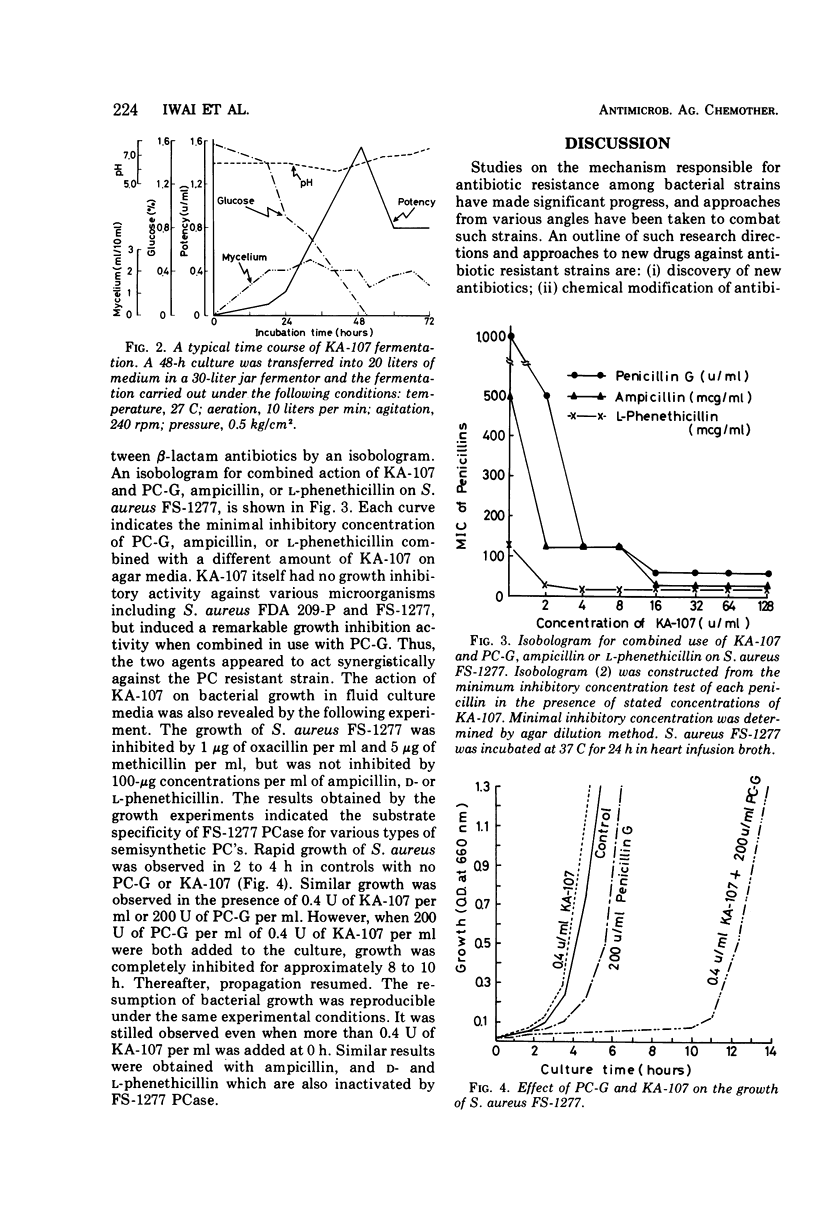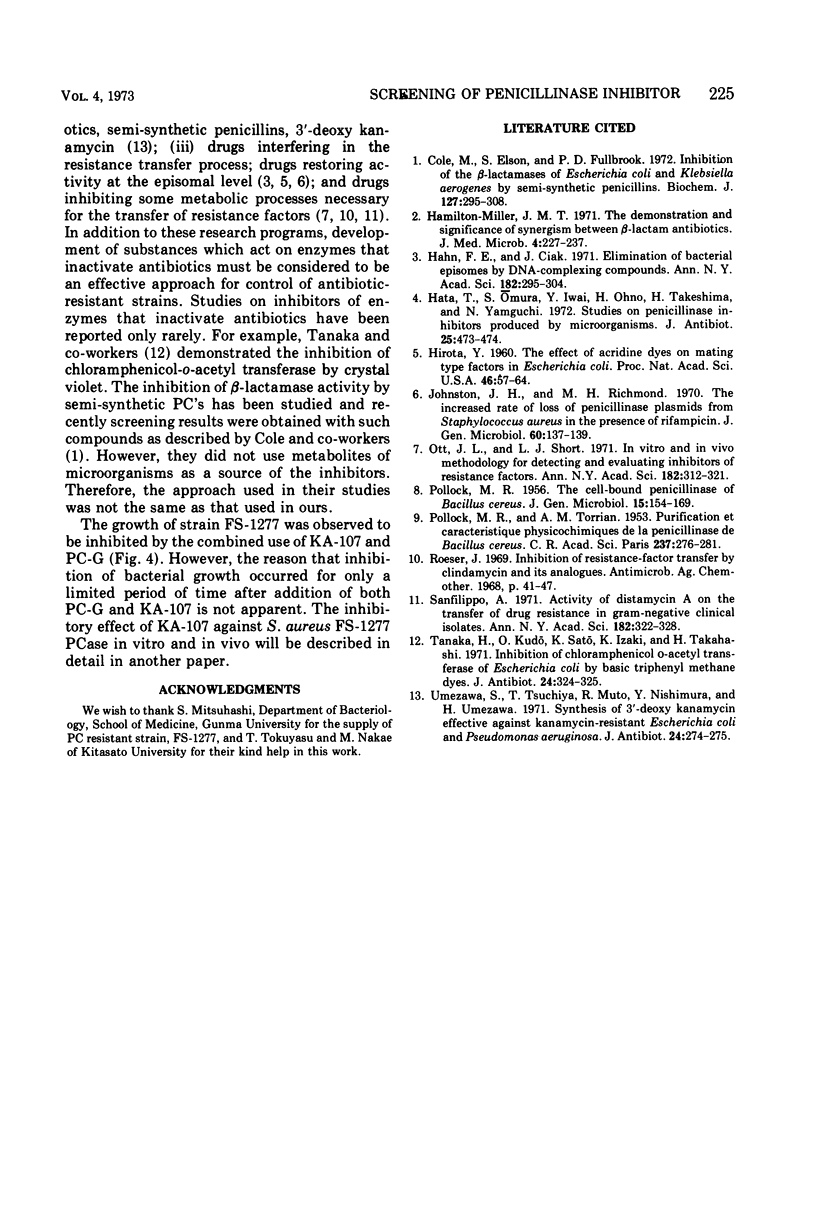Abstract
It is known that penicillin resistance of bacteria is mainly caused by the inactivation of penicillin by penicillinase derived from such strains. We have developed a screening procedure for penicillinase inhibitors. Several microorganisms were found to produce such inhibitors, and from the culture filtrate of Streptomyces gedanensis ATCC 4880 a penicillinase inhibitor, named KA-107, was isolated. The characteristics of this inhibitor were revealed by an in vitro test by using penicillinase derived from penicillin resistant Staphylococcus aureus, FS-1277. When KA-107 was used in combination with penicillin-G, ampicillin, d- or l-phenethicillin, the growth inhibitory activity of these penicillins was maintained.
Full text
PDF



Selected References
These references are in PubMed. This may not be the complete list of references from this article.
- Cole M., Elson S., Fullbrook P. D. Inhibition of the -lactamases of Escherichia coli and Klebsiella aerogenes by semi-synthetic penicillins. Biochem J. 1972 Mar;127(1):295–308. doi: 10.1042/bj1270295. [DOI] [PMC free article] [PubMed] [Google Scholar]
- Hahn F. E., Ciak J. The problems of drug-resistant pathogenic bacteria. Elimination of bacterial episomes by DNA-complexing compounds. Ann N Y Acad Sci. 1971 Jun 11;182:295–304. doi: 10.1111/j.1749-6632.1971.tb30665.x. [DOI] [PubMed] [Google Scholar]
- Hamilton-Miller J. M. The demonstration and significance of synergism between -lactam antibiotics. J Med Microbiol. 1971 May;4(2):227–237. doi: 10.1099/00222615-4-2-227. [DOI] [PubMed] [Google Scholar]
- Hata T., Omura S., Iwai Y., Ono H., Takeshima H. Studies on penicillinase inhibitors produced by microorganisms. J Antibiot (Tokyo) 1972 Aug;25(8):473–474. doi: 10.7164/antibiotics.25.473. [DOI] [PubMed] [Google Scholar]
- Hirota Y. THE EFFECT OF ACRIDINE DYES ON MATING TYPE FACTORS IN ESCHERICHIA COLI. Proc Natl Acad Sci U S A. 1960 Jan;46(1):57–64. doi: 10.1073/pnas.46.1.57. [DOI] [PMC free article] [PubMed] [Google Scholar]
- Johnston J. H., Richmond M. H. The increased rate of loss of penicillinase plasmids from Staphylococcus aureus in the presence of rifampicin. J Gen Microbiol. 1970 Jan;60(1):137–139. doi: 10.1099/00221287-60-1-137. [DOI] [PubMed] [Google Scholar]
- Ott J. L., Short L. J., Holmes D. H. The problems of drug-resistant pathogenic bacteria. In vitro and in vivo methodology for detecting and evaluating inhibitors of transfer of resistance factors. Ann N Y Acad Sci. 1971 Jun 11;182:312–321. doi: 10.1111/j.1749-6632.1971.tb30667.x. [DOI] [PubMed] [Google Scholar]
- POLLOCK M. R., TORRIANI A. M. Purification et caractéristiques physicochimiques de la pénicillinase de Bacillus cereus. C R Hebd Seances Acad Sci. 1953 Jul 20;237(3):276–278. [PubMed] [Google Scholar]
- POLLOCK M. R. The cell-bound penicillinase of Bacillus cereus. J Gen Microbiol. 1956 Aug;15(1):154–169. doi: 10.1099/00221287-15-1-154. [DOI] [PubMed] [Google Scholar]
- Roeser J. Inhibition of resistance-factor transfer by clindamycin and its analogues. Antimicrob Agents Chemother (Bethesda) 1968;8:41–47. [PubMed] [Google Scholar]
- Sanfilippo A. Activity of distamycin A on the transfer of drug resistance in gram-negative clinical isolates. Ann N Y Acad Sci. 1971 Jun 11;182:322–328. doi: 10.1111/j.1749-6632.1971.tb30668.x. [DOI] [PubMed] [Google Scholar]
- Tanaka H., Kudo O., Sato K., Izaki K., Takahashi H. Inhibition of chloramphenicol O-acetyltransferase of Escherichia coli by basic triphenylmethane dyes. J Antibiot (Tokyo) 1971 May;24(5):324–325. doi: 10.7164/antibiotics.24.324. [DOI] [PubMed] [Google Scholar]
- Umezawa S., Tsuchiya T., Muto R., Nishimura Y., Umezawa H. Synthesis of 3'-deoxykanamycin effective against kanamycin-resistant Escherichia coli and Pseudomonas aeruginosa. J Antibiot (Tokyo) 1971 Apr;24(4):274–276. doi: 10.7164/antibiotics.24.274. [DOI] [PubMed] [Google Scholar]


